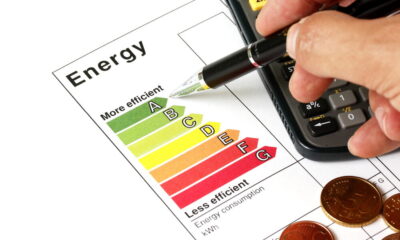

Energy
Report Shows For The First Time That Behaviour Change Frequently Delivers ‘Metered’ Energy Savings
Until now, only limited evidence has shown that behaviour change programmes improve energy efficiency. Now, for the first time, many energy professionals have simultaneously reported strong energy efficiency savings being achieved through behaviour change programmes in the UK.
In the latest issue of the UK Energy Efficiency Trends report (Volume 13, published 21 January 2016), energy analysts EEVS and Bloomberg New Energy Finance has partnered with independent behaviour change and environmental charity Global Action Plan to develop a dataset covering behaviour change opportunities, costs, savings performance, influencing factors and wider impacts.
The findings show current levels of activity and planned activity, providing those responsible for driving down the UK’s energy consumption and emissions with critical information.
For those charged with designing and implementing behaviour change programmes, the insights will help to determine best practice.
But perhaps the evidence is most important for those who, until now, have wanted stronger proof about the impacts achievable before commissioning behaviour change initiatives.
The key finding from the report is that behaviour change consistently delivers tangible savings.
The report found that achieved savings are often up to 5% of energy consumption, with some projects delivering savings in the range of 10% to 20%. In the majority of cases, the savings of completed projects were at the level anticipated at the project outset.
“The most important insight is that the success of many of the projects has been measured using energy meters,” said Chris Large, Senior Partner at Global Action Plan.
“The survey indicates more than 50% of engagement programmes have achieved metered energy savings. Seeing an energy meter recording lower consumption is the crucial evidence required for energy managers and estates directors to invest effort and budget in behaviour change programmes,” he said.
Figures 22 and 23, below, show that 71% of the schemes discussed were part of a wider energy saving scheme but only 11% guaranteed savings. However, in Figure 24, 64% of respondents stated that they had undertaken some form of post programme measurement to analyse success and impact.
“For years, establishing the savings behaviour change can deliver has relied on meter evidence that is less than ideal. This survey shows for the first time that behaviour change has delivered metered savings consistently,” said Chris Large.
Download the graph above here: EET Jan 2016 Figures 22 – 24
Download the full report here: http://www.energyefficiencytrends.co.uk/latestreport.html
Compiled from the results of a confidential, quarterly industry survey, the UK Energy Efficiency Trends Report clearly evidences industry trends and has become one of the sector’s leading sources of market intelligence. The report covers both energy suppliers and consumers, providing differentiated results for each market sector.
The report is delivered by a research partnership between EEVS and Bloomberg New Energy Finance, and supported by Bird & Bird, Bellrock and Schneider Electric.
Headline findings from Issue 13:
82% of consumers reported commissioning new energy efficiency projects; that’s higher than the long term trend which is c70% and a new sector high
Lighting-based technologies continued to outperform other energy saving technologies, with an uptick in the specification of lighting controls in Q3. Boiler controls also experienced growth, but this could be due to seasonal influences
The capital cost profile remains volatile. Q3 saw a strong volume of smaller scale projects (up to £50k) and large projects (over £500k), but the core mid-range projects (£50 – 500k) was down, accounting for only one in five projects
Financing arrangements remained stable, but a trend that has emerged throughout 2015 has been the use of combination funding (a mix of in-house and external finance)
Financial payback periods returned to the long term trend of between three and four years, driven by a growth in longer five to 10-year payback projects
To read the full report press release, click here: www.eevs.co.uk/trendsnews.html


 Environment10 months ago
Environment10 months agoAre Polymer Banknotes: an Eco-Friendly Trend or a Groundswell?

 Environment11 months ago
Environment11 months agoEco-Friendly Home Improvements: Top 7 Upgrades for 2025

 Features9 months ago
Features9 months agoEco-Friendly Cryptocurrencies: Sustainable Investment Choices

 Features10 months ago
Features10 months agoEco-Friendly Crypto Traders Must Find the Right Exchange





























